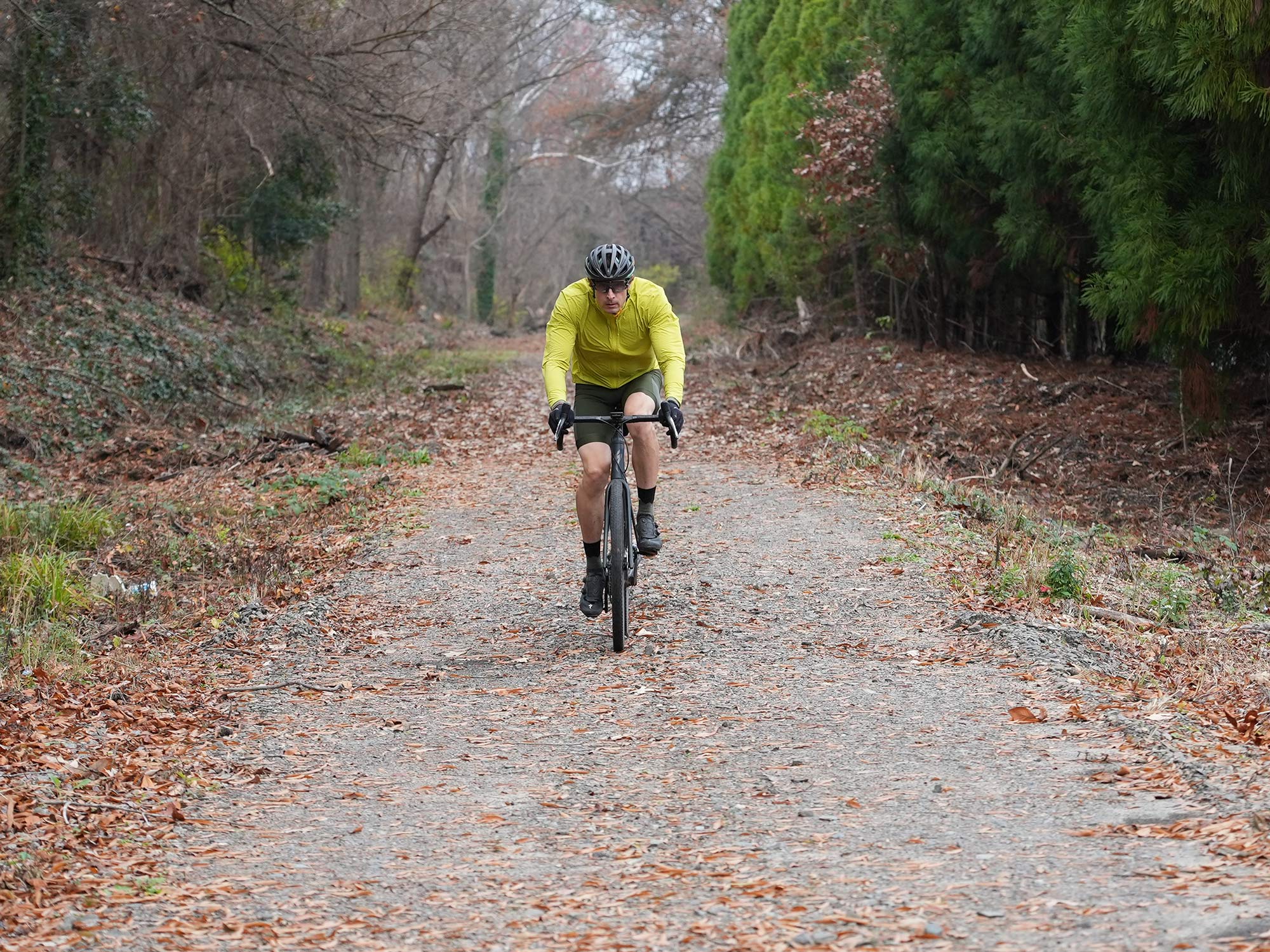I’ve had some time to think about the new Diverge STR. I’ve ridden a lot of gravel bikes since I returned it, and none do what the STR can do. But let’s just go ahead and say what you’re likely thinking: Yeah, but look at it.
Personally, I’m a fan of the looks. The way the sloping top tube bends sweetly into seatstays that parallel the downtube’s angle. The little something at the top the seat tube to catch your eye. Even the matte green that sometimes looks like dark blue. I love all of it.
While you’re free to disagree with me on aesthetic measures, I think anyone who’s ridden it would be hard-pressed to disagree on the performance.
On rough gravel and all manner of uneven, unkempt surfaces, the Diverge STR has a way of floating over it. Or, more precisely, of letting you float over it, since its design is of the “suspend the rider, not the bike” philosophy. And it does so without pivots or fuss, just a bit of controlled flex and suspension that disappeared under me.
At the bottom of this is the rest of my ride review. First, here’s a closer look at the features, but I’ve left the tech deep dive in my launch coverage here.
Specialized Diverge STR features
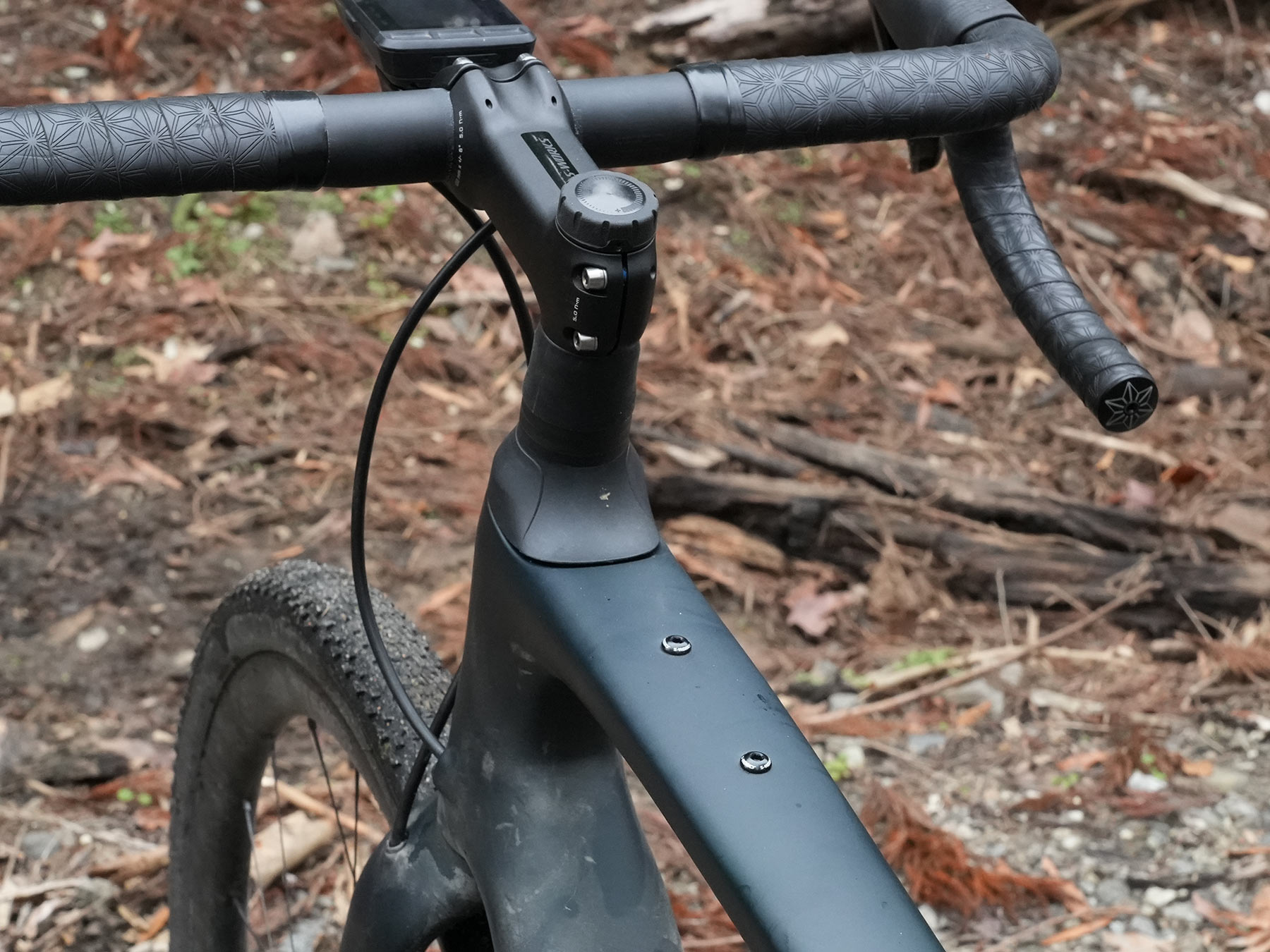
Beyond the full carbon frame (which weighs ~1,100g without the rear damper assembly), the heart of the STR is the dual Future Shock micro-suspension. In the front is a damped 20mm shock inside the steerer that lets the stem compress upon impacts.
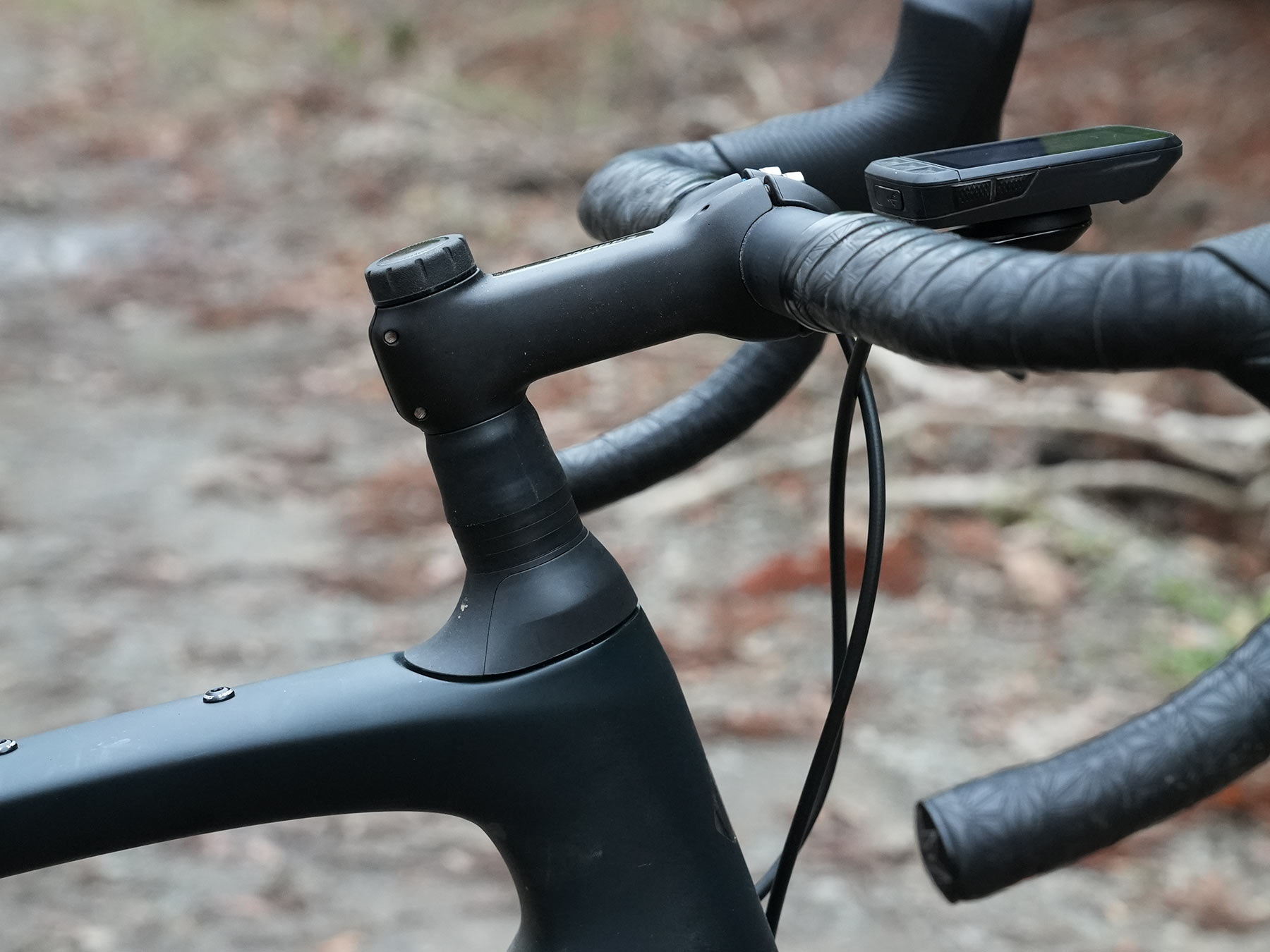
Yes, it’s tall and creates a lot of stack height. But I like to run top tube bags anyway, and there are bag mounts there to accommodate such things, and those things tend to fill in that L-shaped gap quite nicely. They also keep snacks at the ready, which is a nice bonus.
The Diverge STR’s Future Shock has adjustable damping, and you should be able to upgrade it as desired to the latest 3.3 version with swappable spring rates if you need a more tunable range.
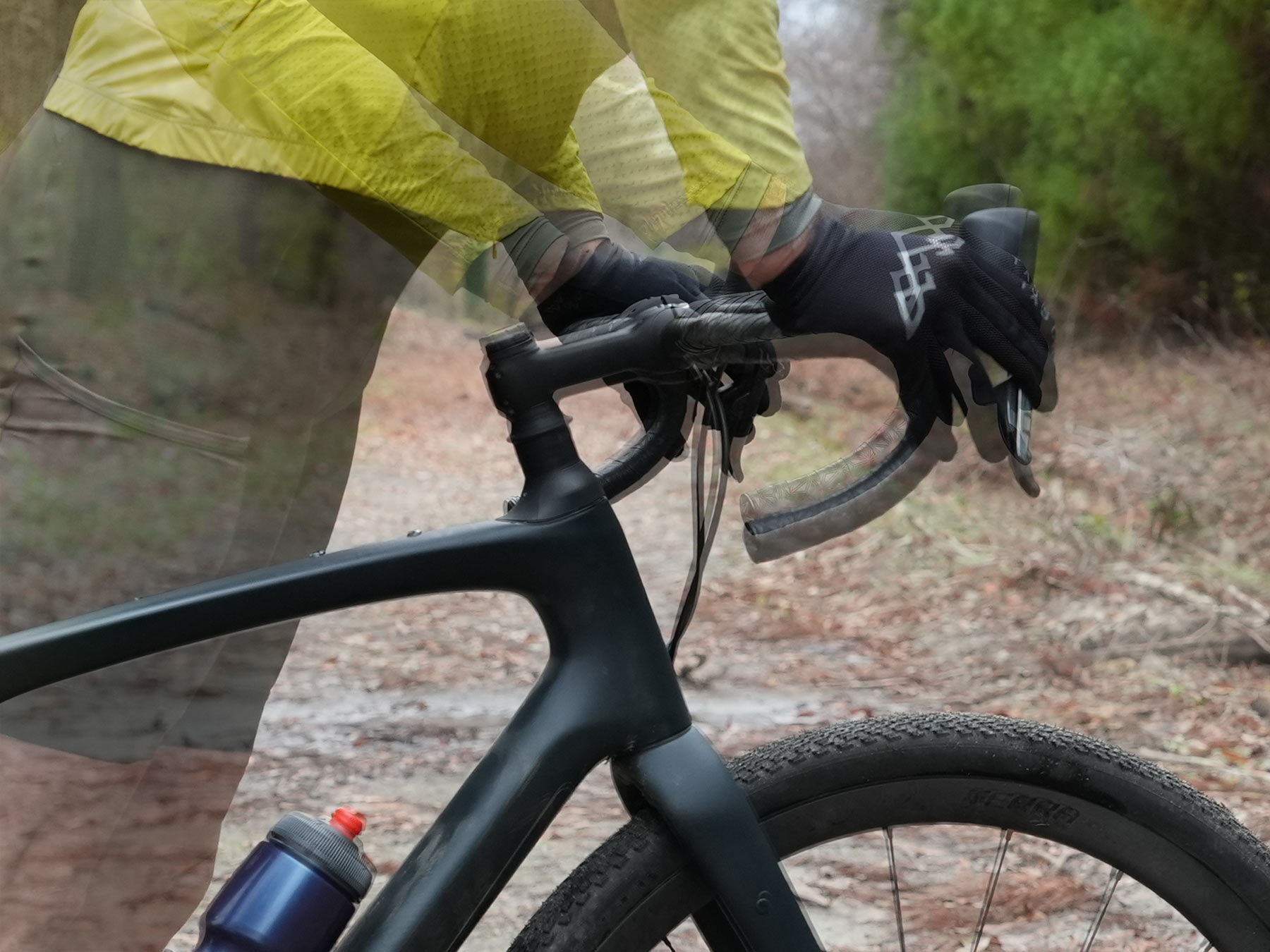
20mm may not seem like a lot, but it’s enough, and it works very well. This photo overlay (above) shows it topped out to fully compressed.
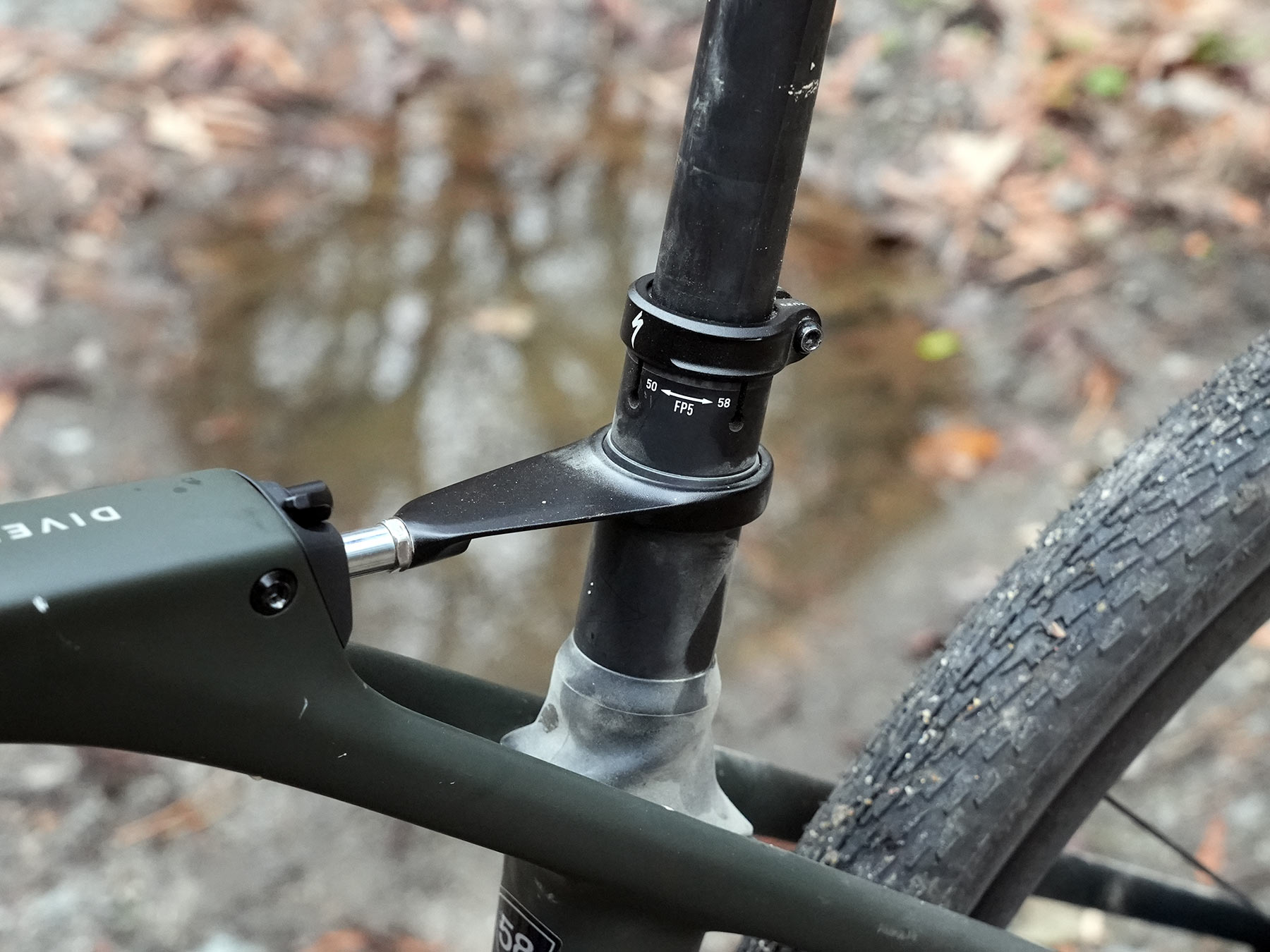
The rear Future Shock is an all-new contraption that adds a hydraulic damper to control seatpost flex. Unlike the new Roubaix’s minimal seatpost flex, the STR can bend way back. I have cutaway photos and all the tech in our launch coverage, but the short of it is this:
A main seat tube is captured inside another tube that’s a blend of carbon and glass fibers. Several different tubes are available, and each has two orientations, allowing for lots of flex rates so you can fine-tune it to your body weight.
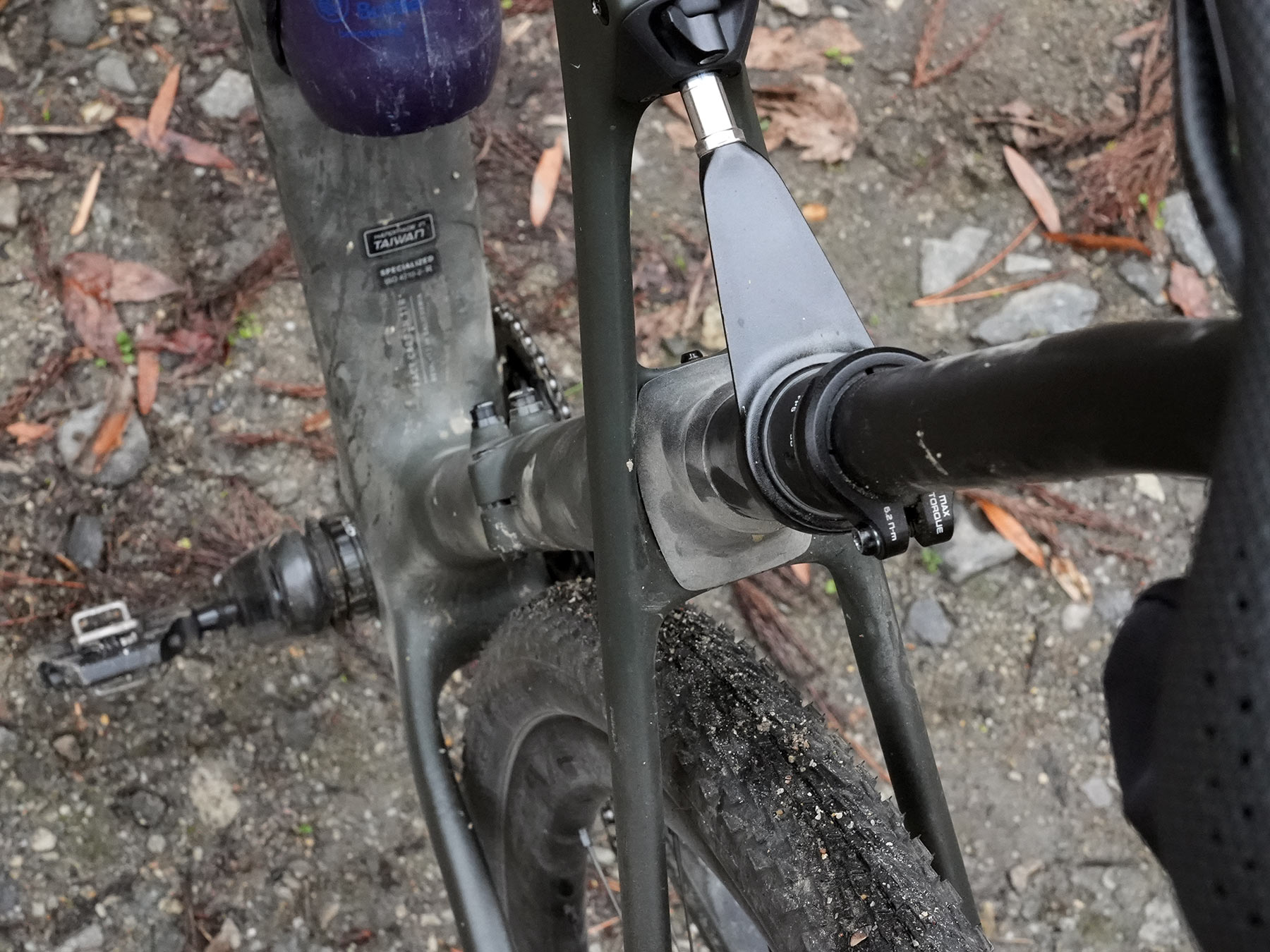
A blade connects the post to the damper, which has three positions so you can control the rate of flex and return. The damper controls the motion so that it doesn’t spring back and forth too quickly or easily.
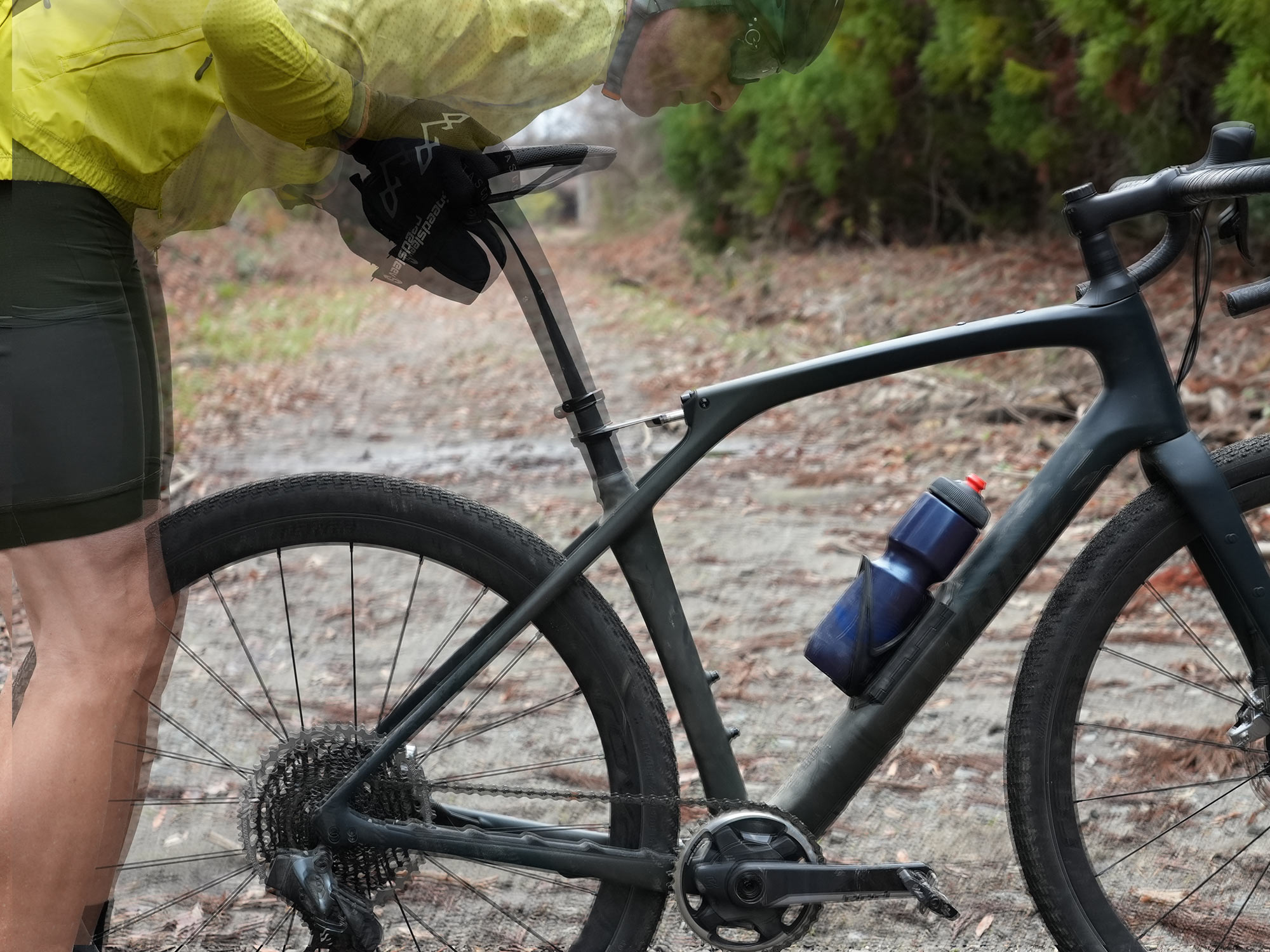
It also prevents the post from bending too far backward…Specialized says you could get the saddle surprisingly (scarily) close to the rear tire if it weren’t contained.
The photo overlay (above) shows how much flex I could get with the seatpost sleeve recommended for my weight. The shot was taken with me giving all of my weight a little “bounce” onto the saddle.
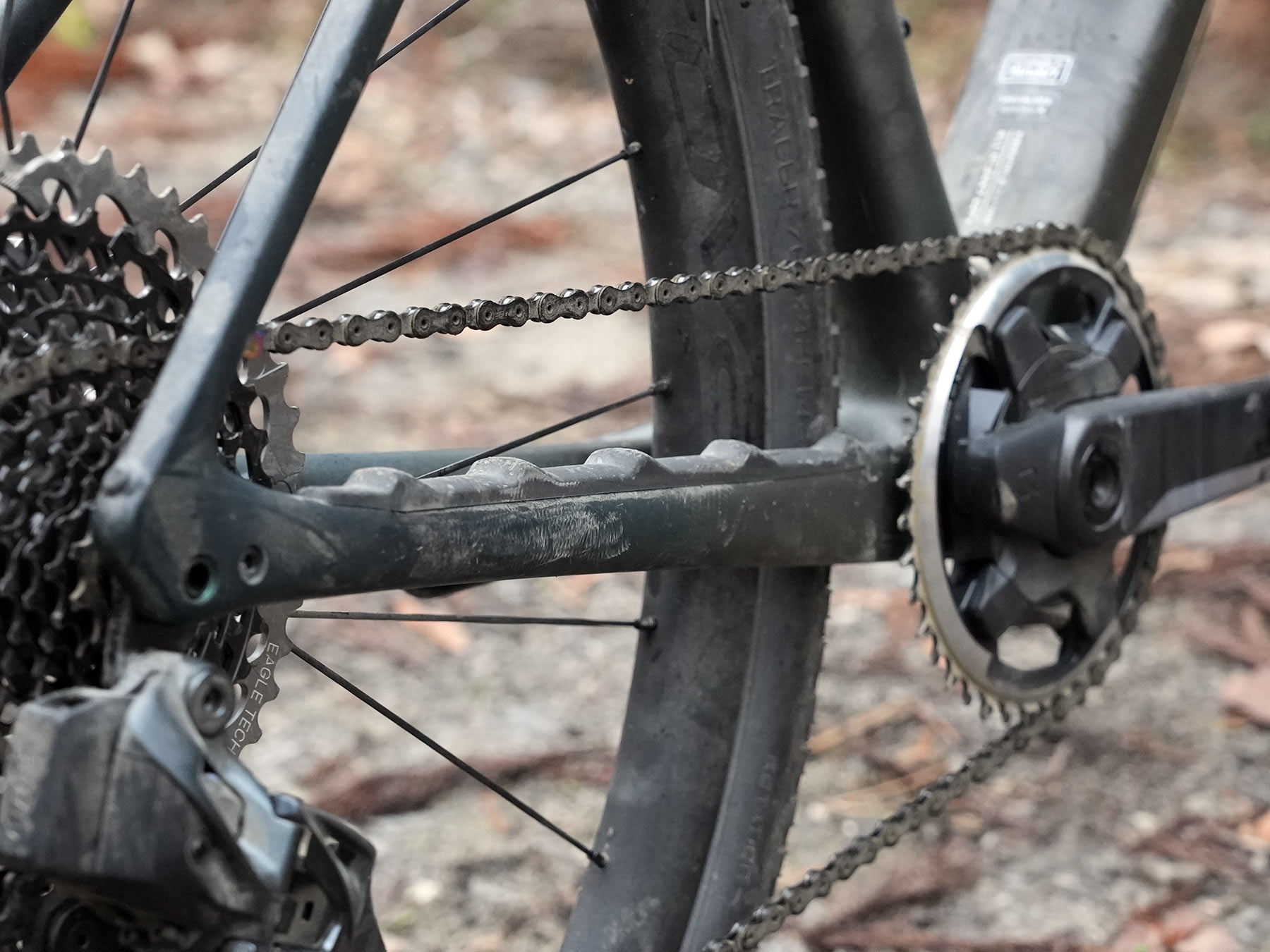
The rest of the bike is what a modern gravel bike should be. It’s 1x only (2x fans, the comments section is below), with aggressive chain slap protection and muting. That rear port above the axle is a wire port for Di2, not a stealth mount. The STR has no concessions for bolt-on rear racks or mounts because it’s intended as a race bike.
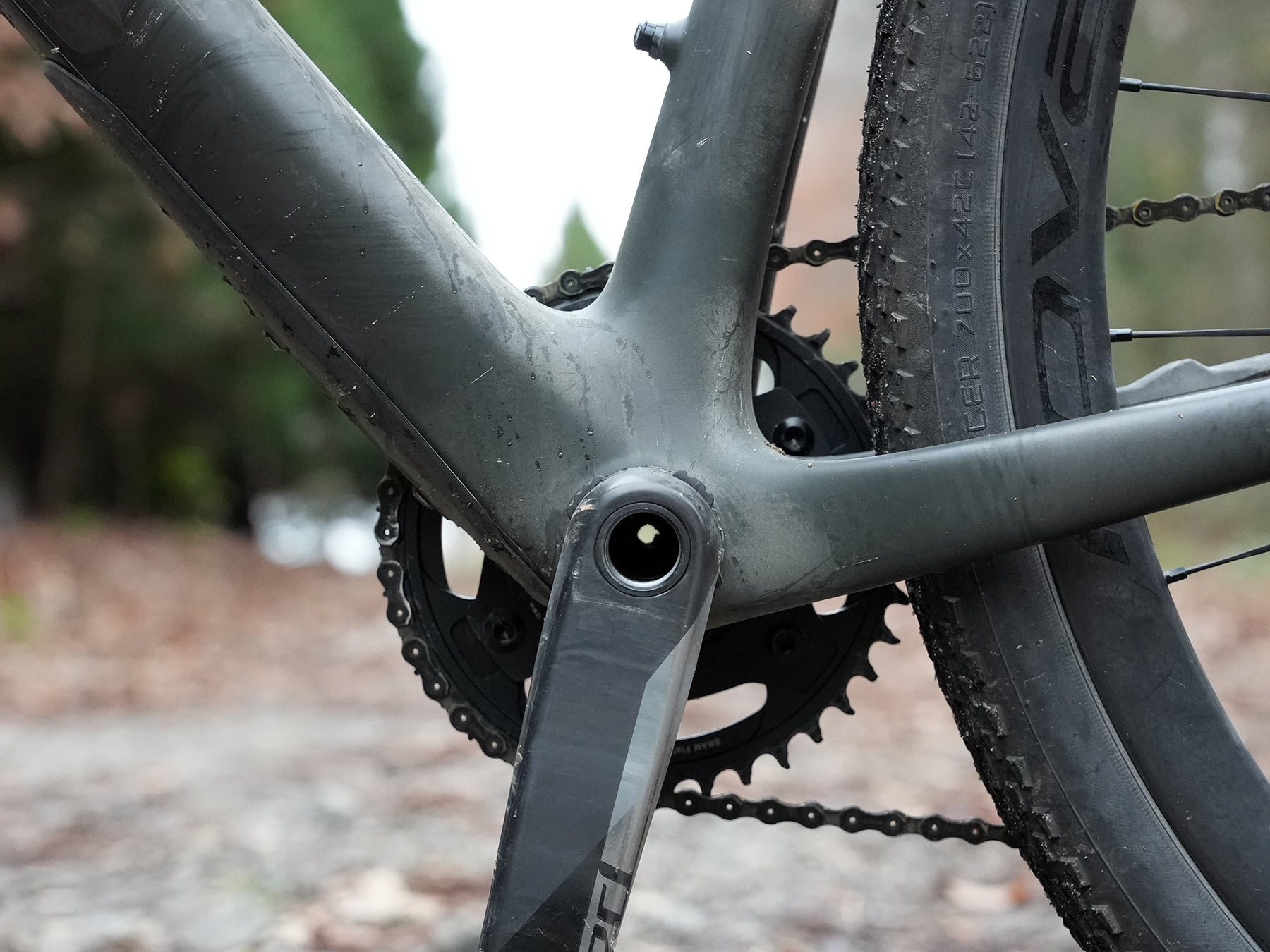
A big BB junction and stout downtube keep power transferring where it’s supposed to go.
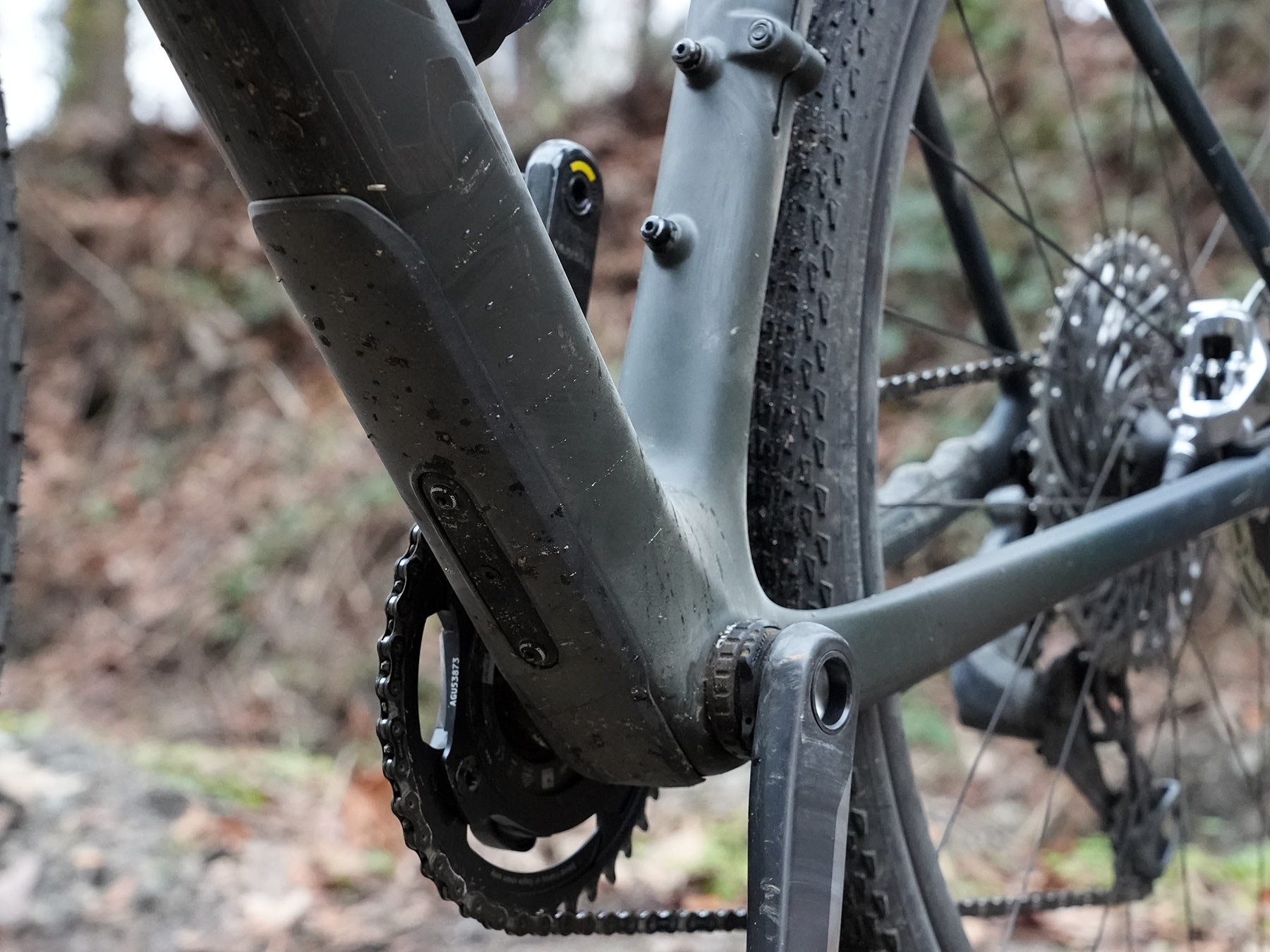
A bash guard and extra bottle cage mount hide under the downtube. Not shown, their SWAT downtube storage compartment is accessed from the top side.
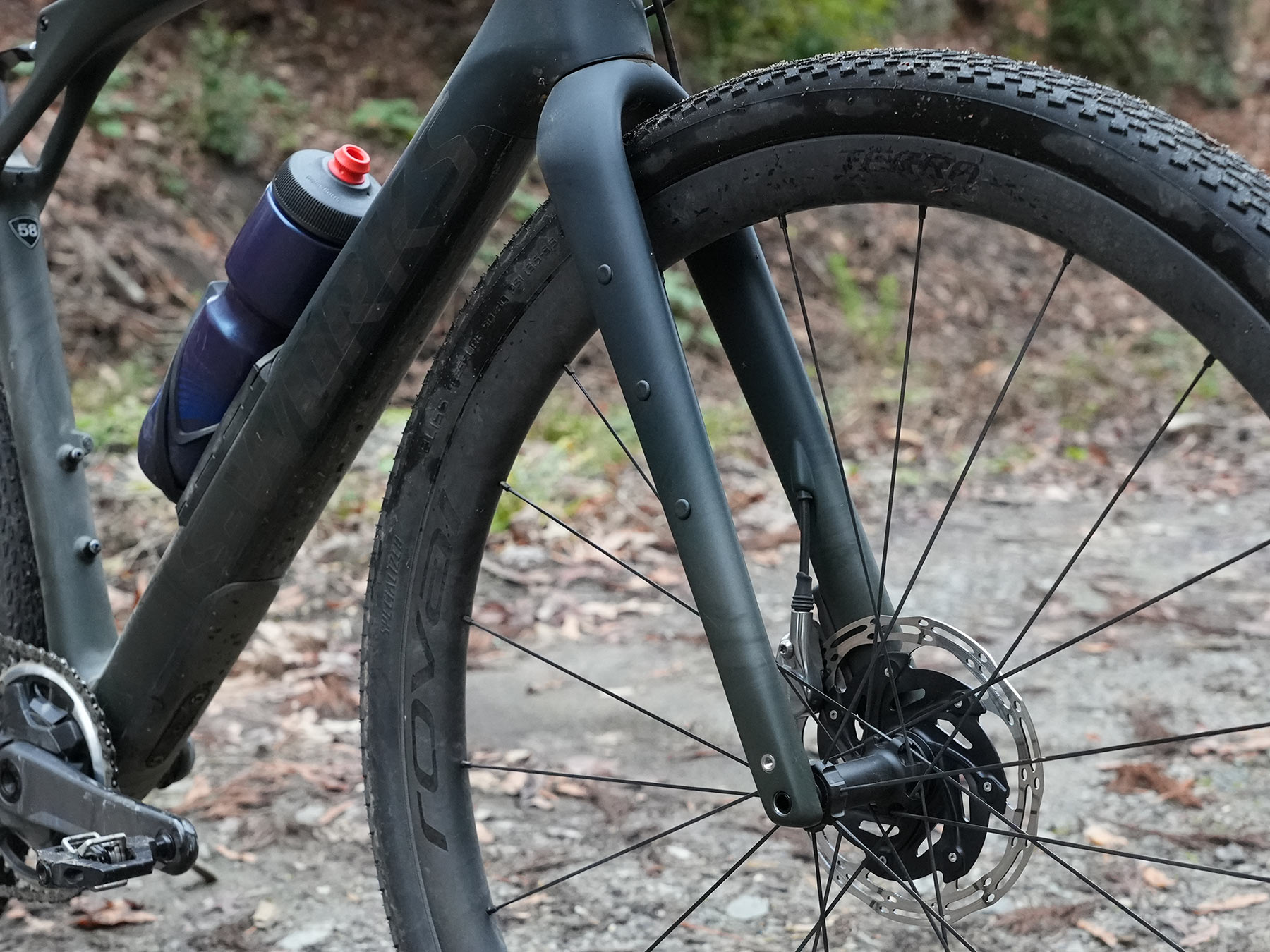
The fork does have accessory, rack, and fender mounts.
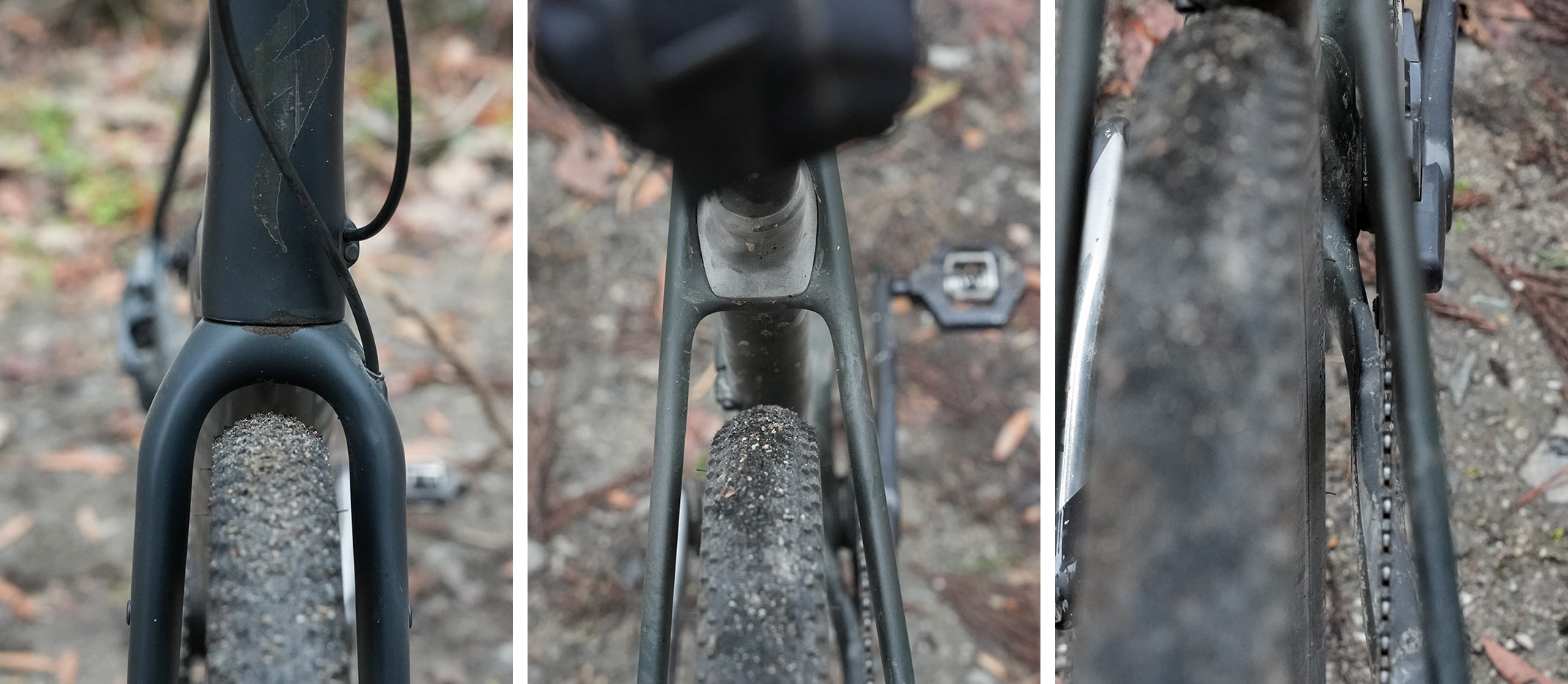
Tire clearance is 700×47 (or 650Bx2.1″), but all models come with 700×42 Tracer tires. They’re very quick tires, but not very aggressive, so you may want something with more bite for really loose terrain.
Diverge STR Ride Review
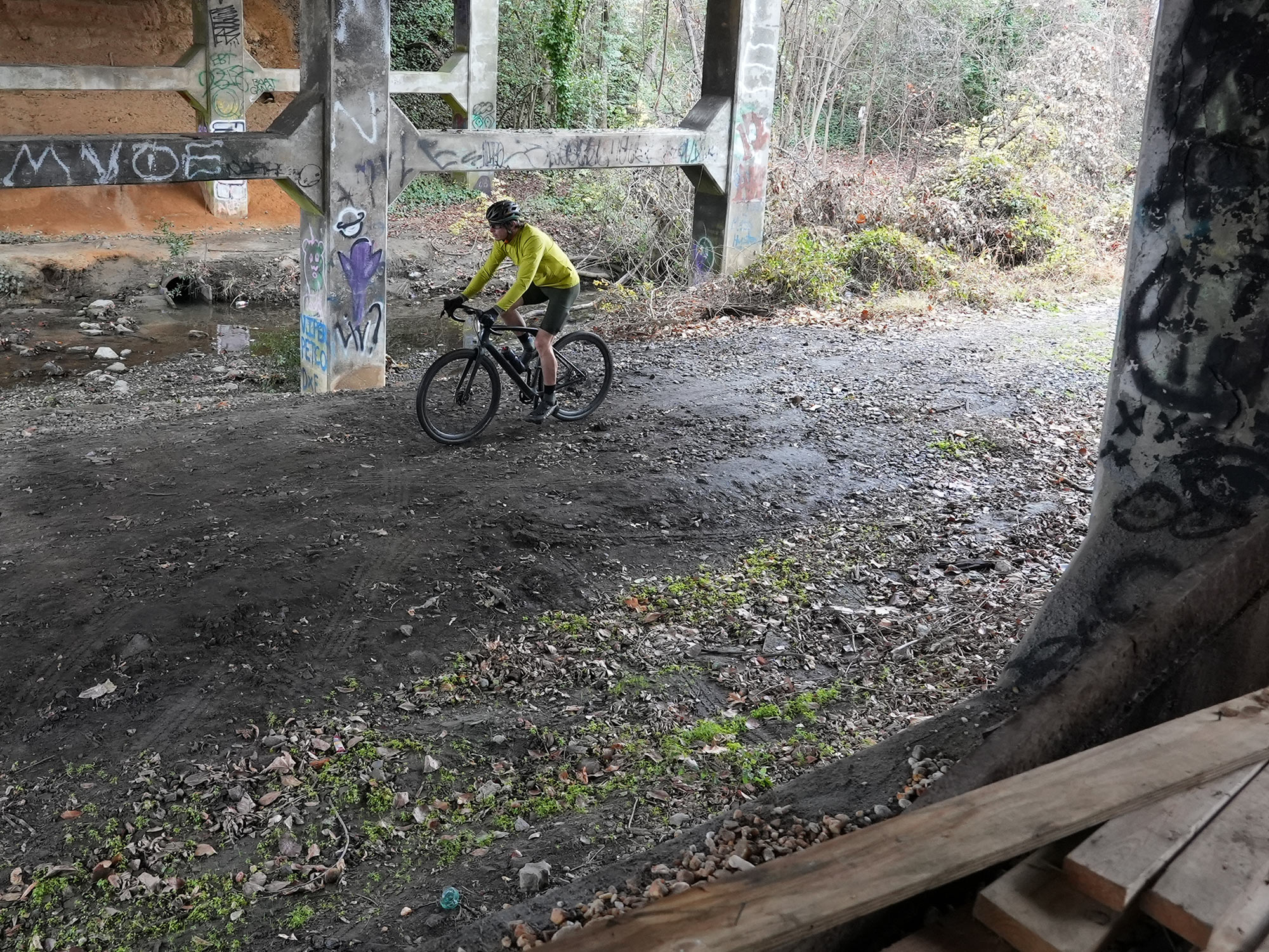
My first ride was on the famed Maple Sally loop near Morganton, NC. It’s a long dirt and gravel climb that tops out and rolls through the mountains before descending miles of curvy, skitchy, and loosely maintained gravel roads. It’s a bomber descent that’s well-earned and super fun. Sometimes a little too fun.
After that it was back home for a couple of months of riding local connectors and gravel trails, plus a little singletrack.
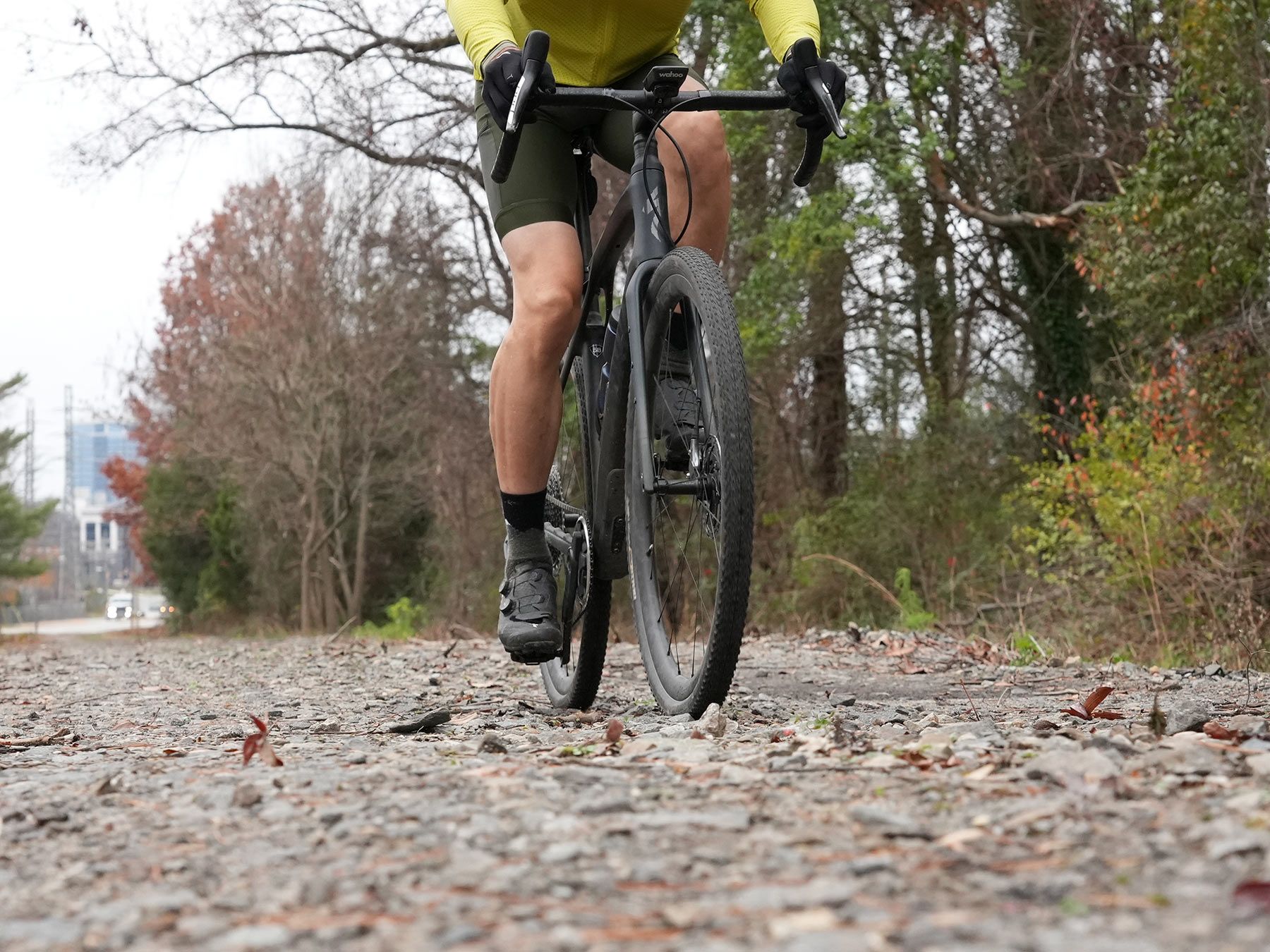
When I picture “gravel”, this is what I’m thinking (photo above) – small rocks packed into dirt for a mostly hard but bumpy surface. That’s what most of our local gravel is, with some being looser thanks to a deeper surface layer of rock. Head west, and things get chunkier as you get into forest service roads.

And this is precisely where the Diverge STR shined. The flex and micro-suspension soaked it up, transmitting very little of it to my butt and hands. Since most gravel is a sit-down-and-power-through-it experience, the longer I can remain seated and hammer, the better off I’ll be. It saves energy, and the STR’s engineered flex saves it in droves.
Specialized recommends sliding your saddle forward a few millimeters more than you would on a comparable bike so that you “sag” into the ideal position. I set my saddle height just like normal, slid the seat forward a bit, and it felt great. The rearward flex never upset my riding position, and I never felt like it was throwing off my bike fit. It just felt normal, but smoother.
The STR bikes come with Body Geometry Power saddles, which certainly doesn’t hurt. Those are killer saddles, I highly recommend them.
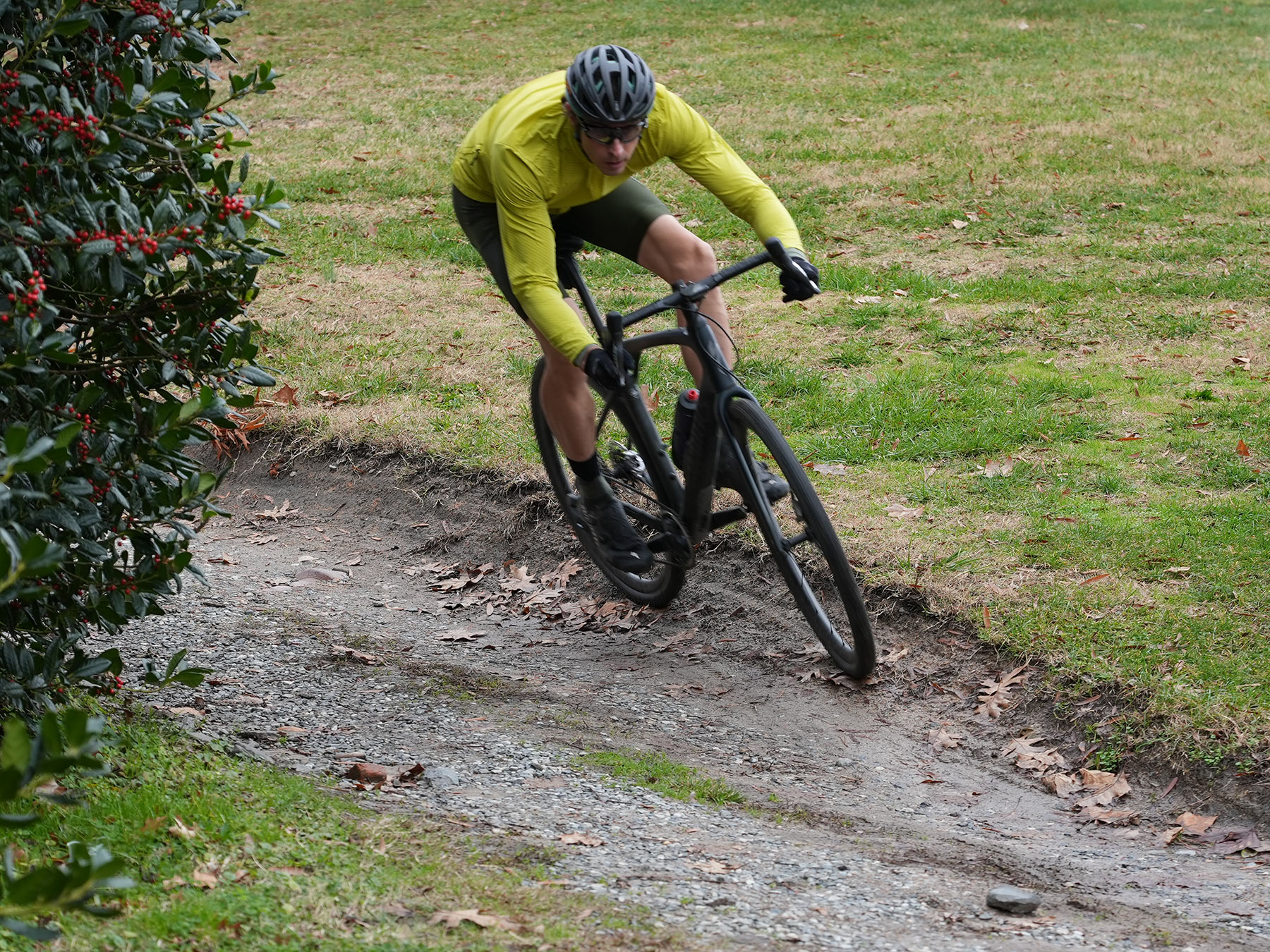
Suspension aside, the bike handles as a race bike should. It’s stable on fast straightaways, but quick and nimble in the corners.
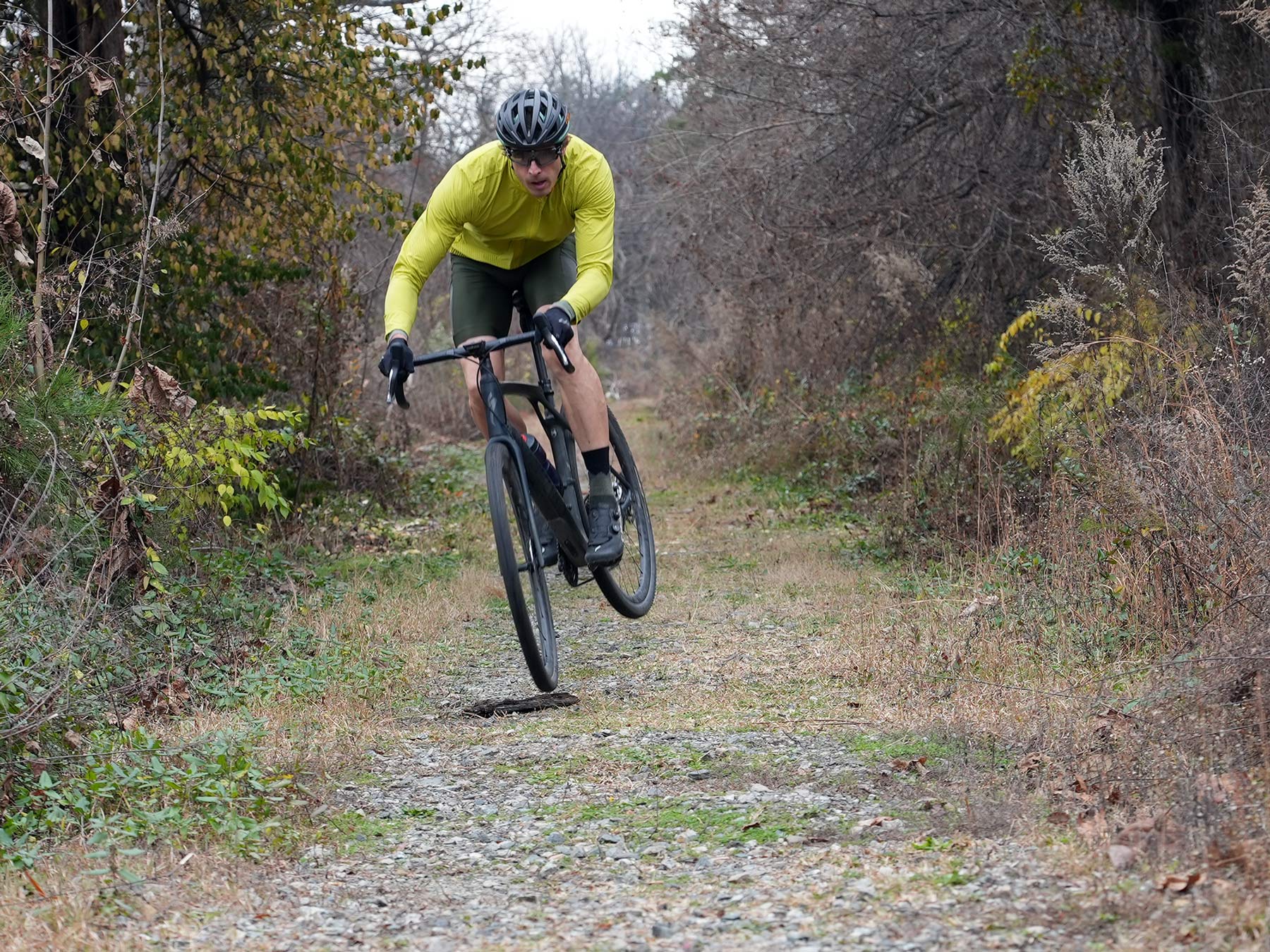
And it’s easy to pop up and over trail debris. Sticks and stones will never slow me.
Final thoughts
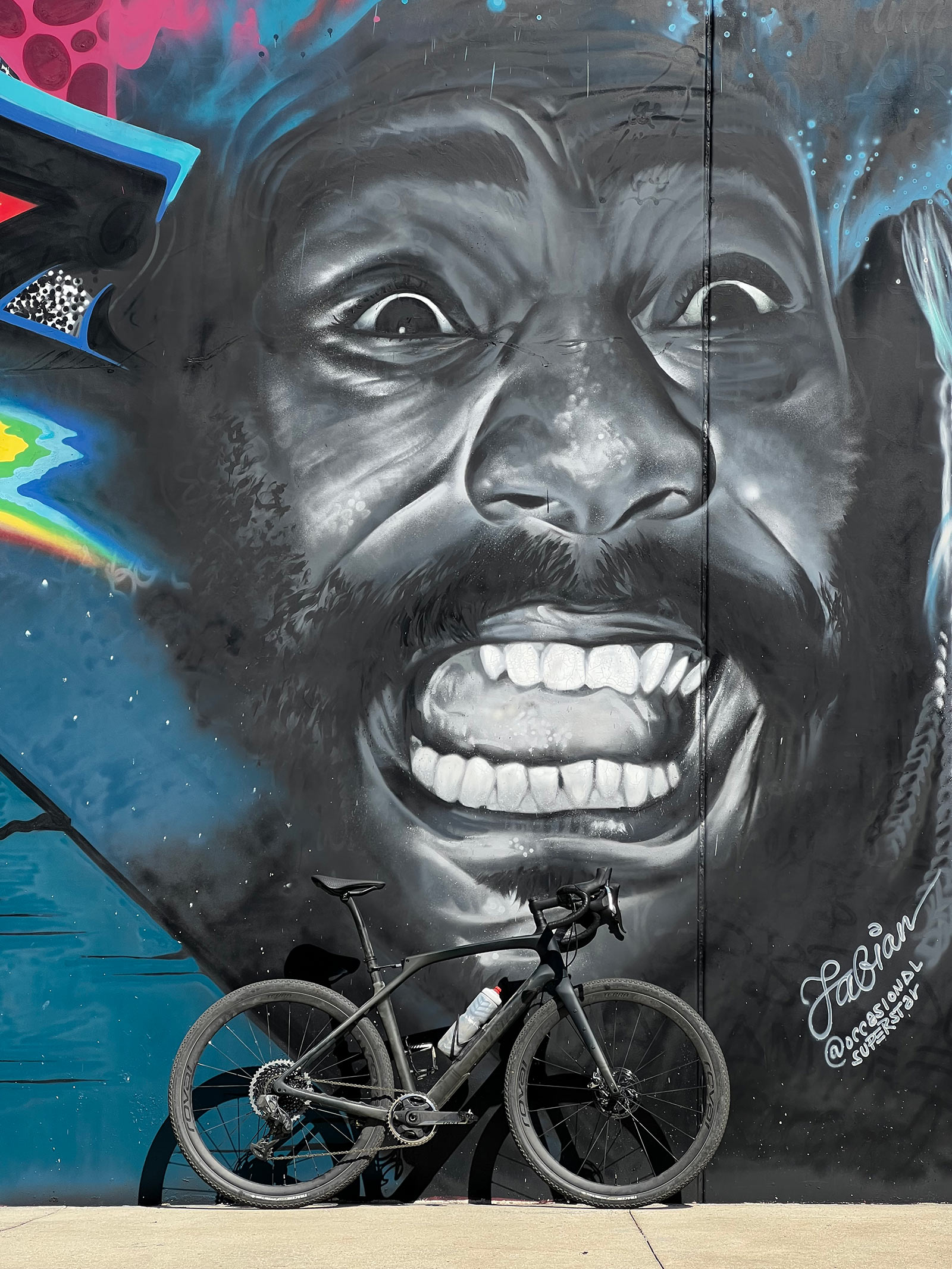
Your reaction to the bike’s looks may vary, but if want a fast gravel bike with dialed geometry that won’t beat you up, the Specialized Diverge STR is worth a look.
Specialized has proven over and over again that they know how to make a great bike. And they keep proving that they’re not afraid to try new things. For that, I’m grateful, because even if sometimes they don’t work out, at least they tried. In this case, they not only succeeded in making something that works so smoothly and simply, they also made it work for virtually every rider size and weight.
